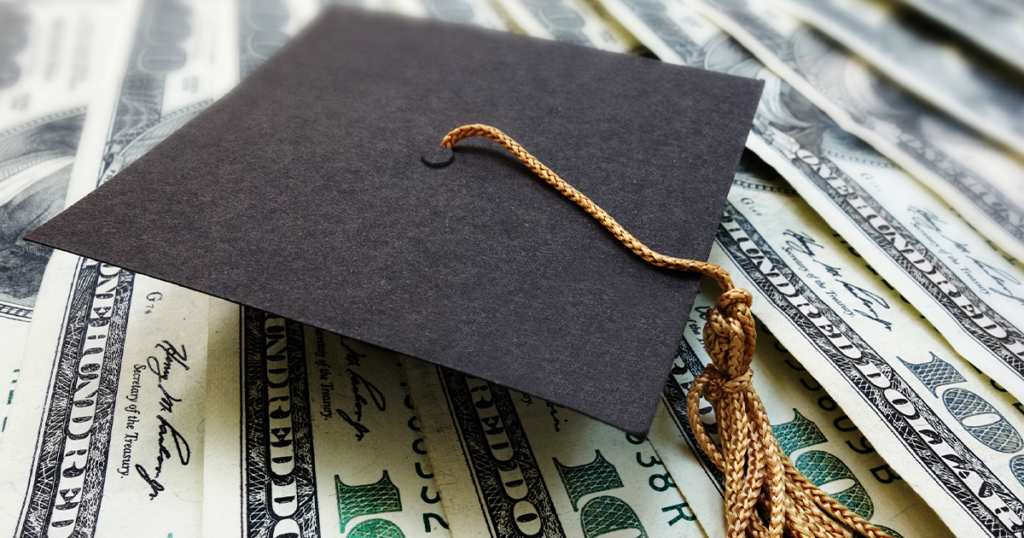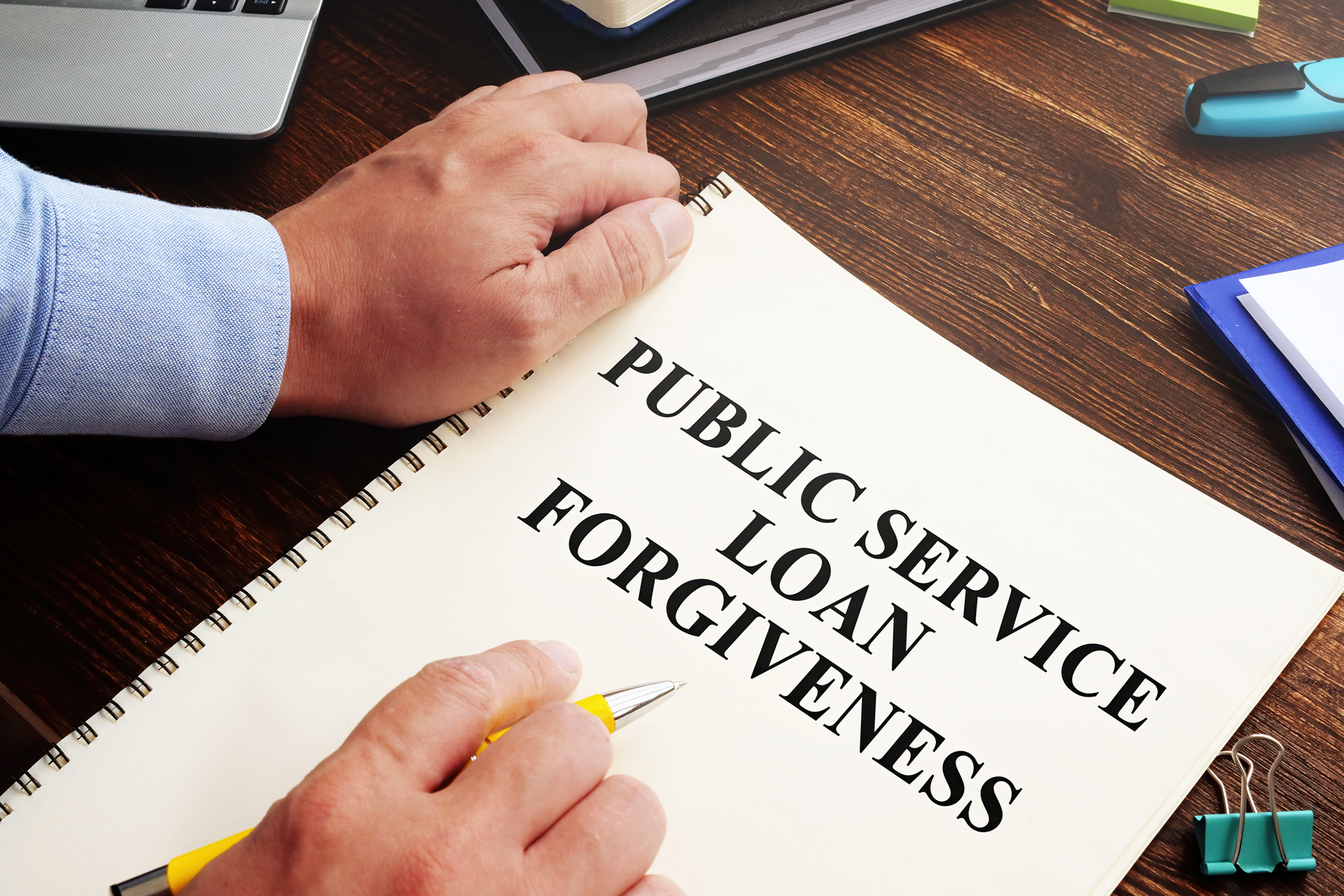Student loan debt has now surpassed credit card debt as the largest consumer debt in America.1 This debt disproportionately affects younger Americans due to the ever-rising cost of education.2 In order to avoid student loan debt, some students take lesser paying positions in the public sector with the goal of working toward the elusive Public Service Loan Forgiveness Program (PSLF). If you’ve met with a financial advisor or listened to one, you know that some advise against banking on this forgiveness.
In 2018, Forbes found that 98% of applications for PSLF were rejected.3 While these statistics are accurate, it is not a complete story. Applying for forgiveness is a complex process, and most borrowers are not equipped to tackle this alone. Applications are often submitted incorrectly, so most borrowers are denied forgiveness. Having a qualified attorney walk you through the process can mean the difference between having your student loan debt forgiven and making thousands of dollars in unnecessary payments.

What is Public Service Loan Forgiveness (PSLF)?
PSLF was established in 2007 to encourage young professionals to seek careers in both government and non-profit sectors, otherwise known as Public Service Organizations (PSO).4 Although PSO’s do not always offer the most competitive salaries, the appeal of student loan forgiveness is a distinct advantage over traditional employment.
Eligibility for PSLF
Under 34 CFR § 685.219, the Department of Education provides that in order to qualify a borrower must meet certain requirements. These requirements include the following:
- The borrower’s payments must be made on eligible Direct Loans;
- The borrower must make 120 monthly payments after October 1, 2007;
- The required 120 monthly payments must be made under a qualified repayment plan;
- The borrower is a full-time employee of a PSO;
- The borrower must not be in default.
Potential Eligibility Pitfalls for Federal Student Loan Forgiveness
Eligible Loans
To qualify for PSLF, borrower’s loans must be eligible Direct Loans.5 If your loans originated prior to 2012, it is possible that some or all of your student loans are Federal Family Education Loan’s (FFEL). FFEL loans do not qualify for PSLF. Borrowers can log into the National Student Loan Database System (NSLDS) to find out whether they have eligible loans. The data from this system is usually complex but knowing what to look for can make the process easier.
If your loans are not eligible Direct Loans, consolidation may be an option. Consolidation can take two different loans, such as two FFEL loans, or an FFEL loan and Direct Loan, and create a new Direct Loan. This process requires filing the necessary paperwork with your servicer. Consolidating your student loans can also help you avoid default.
Eligible Payments
The second reason why so many borrowers were rejected in the 2018 study was because they did not make enough qualifying payments. PSLF payments only started counting after October 1, 2007. After this date, borrowers are required to have 120 total payments. If the data for the Forbes study was collected in 2018, the borrower would have needed to know about the new program, immediately start paying, and never miss a single payment. This timeline and these complicated requirements explain the high percentage of rejected applicants.
To further complicate the payment requirements, your loans also need to be managed by a specific servicer. Currently, FedLoan is the required servicer but its contract with the Department of Education ends on December 14, 2022. If you are a borrower whose PSLF application was denied in 2018, it’s possible that you made some of your payments to a non-qualified servicer.
Eligible Payment Plans
Borrowers can also be denied forgiveness if they are on the wrong payment plan. A borrower must either be on an Income Driven Repayment Plan (IDR) or a standard 10-year repayment plan to qualify for PSLF.6 IDR plans only became available to borrowers in October of 2009.7 Prior to IDR, a borrower would have had to be on a standard 10-year repayment plan. Congress elected to expand the requirements to IDR in 2012 to ease the crushing burden of monthly student loan payments.
To obtain forgiveness in the 2018 study, a borrower would have needed to be on the standard 10-year repayment plan for two years then switch to a qualifying IDR plan when it became available in 2009. The chance of success for borrowers was slim, which again explains the high percentage of rejected applications.
Eligible Employers
Lastly, a borrower has to be employed by a qualifying PSO, which includes government employers, non-profit 501(c)(3) corporations, and non-profit companies that provide certain types of qualifying public service. This is also where borrowers may fall into a trap; not all non-profits are 501(c)(3) corporations. These entities can sometimes be 501(c)(4) corporations or simply not made the correct election to be a qualifying PSO. If the company is not a 501(c)(3) then you will have to appeal to your servicer and show that company provides a qualifying public service. These employers include services like utilities, park management, and others. These types of entities are determined on a case by case basis.
Borrowers must prove to the required servicer that they worked for a qualifying PSO during the 120 months. To prove their eligible employment, the Department of Education instructs borrowers to provide proof of employment to the required servicer each year. Borrowers may run into roadblocks if they provide their employment history to the wrong servicer.
Issues with Default
To qualify for PSLF, a borrower cannot be in default at the time they request forgiveness. A borrower is in default if they failed to make a payment within 15 days of their due date.8 If a borrower defaulted on any of their 120 payments, the default would have needed to be cured either through consolidation or rehabilitation before they could request forgiveness.

Let Gordon Delic & Associates Help You Plan for Your Student Loan Forgiveness
Considering the difficult application process, it is amazing that even 2% of borrowers in the 2018 study received PSLF. These complicated rules would confuse anyone. Having an experienced student loan attorney help you through the process is vital to ensure a successful application process. The attorneys at Gordon, Delic & Associates can help you navigate this difficult and ensure that you receive your deserved forgiveness. At Gordon Delic & Associates, we know the pitfalls of the system because we have witnessed them firsthand. Give us a call today to put your student loan worries behind you!
Contact
References:
2. Id.
4. https://www.gao.gov/assets/gao-19-595.pdf
5. 34 CFR § 685.219(c)(1)(iii)
6. 34 CFR § 685.219(c)(1)(iv)
7. https://www.vin.com/studentdebtcenter/default.aspx?pid=14352&id=7250367
8. 34 CFR § 685.219(c)(1)(iii)



